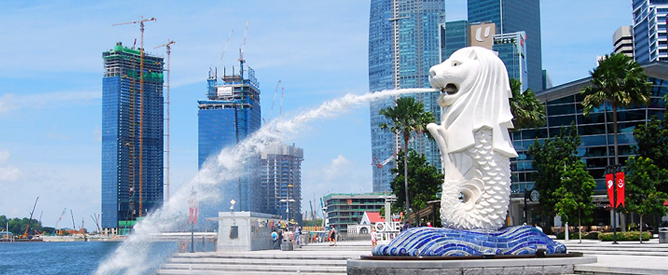
Key Points
Our take on the Budget
1) As we highlighted last year, Primary Deficit will continue to expand as Singapore restructures its economy amid a slowing global growth and potential slowdown in global trades due to protectionism sentiment in some of the larger economies.
Since FY2011, operation revenue for the government grew at an compounded annual growth rate (CAGR) of 6.1% till FY2016, while operating expenses grew 8.9% CAGR in the same period. This has turned a primary budget surplus in FY2011 to a primary budget deficit in FY2015 as operating expenses outgrown revenue. In addition, Primary Deficit is expected to double to $5.6 billion in FY2017 from $2.7 billion in FY2016.
Primary Surplus / Deficit

While Primary Budget remained in deficit for two consecutive years, overall budget was helped by the inclusion of Temasek Holdings into the Net Investment Returns Contribution. Budget FY2017 is expected to be the same.
After including Special Transfer and Net Investment Returns Contribution, the revised FY2016 overall budget surplus of $5.2 billion was 50% higher than the original budgeted surplus of $3.5 billion in 2016. Overall budget for FY2017 is expected to be in a surplus of $1.9 billion.
2) We expect to see the Singapore Government continue finding new sources of tax revenue or enhance existing tax revenue going forward. An example will be the newly introduced Carbon Tax in FY2017 which will fund measures to reduce emission. As mention in our 2016 Singapore Budget Report we believe that an increase in Good and Service Tax (GST) is very probable in the near future as they seek to balance their primary budget.
Impact on Sectors
The Singapore government has announced that they will be carrying forward S$700 million worth of public infrastructure projects to start in FY2017 and FY2018. The move aims to support the construction sector which has undergone a sustained decline over the past few years. The amount represents 2.9% to 3.5% year-on-year (yoy) increase to the public sector construction demand, which is expected to be between S$20 billion to S$24 billion in FY2017 according to a forecast by the Building and Construction Authority of Singapore. The Singapore government has also mentioned that these projects also involve the upgrading of community clubs and sports facilities, where contractual values of these projects are relatively smaller compared to larger scale public infrastructure projects.
We opine that SMEs may be more inclined to partake in the peripheral works since the value of these contracts may be too small for larger construction firms to generate meaningful profits. We view that it is important to further examine the breakdown of the S$700 million public infrastructure projects before we can quantify and assess the potential benefits that can be brought to the sector, which we however do not have further information at this point in time.
Final Thought
Budget FY2017 was once again focused on innovation, digitalisation and helping the SMEs. This was an expected gradual next step from the government to transform our city state into a global information technological centre in a bid to stay ahead of the curve in the face of global demographic crisis. Together with the establishment of the Committee on the Future Economy (“CFE”), Budget 2017 is a clear indication of how Singapore will be restructuring its economy.
Earlier in 2016, Ministry of Manpower has highlighted the importance of improving SME’s productivity. According to Minister of State for Manpower Teo Ser Luck, there are 190,000 enterprises in Singapore, of which 99% are SMEs and they employ about 70% of the workforce. However, SMEs contributed only about half of Singapore’s gross domestic product (GDP) in 2014. Hence, we see that Budget 2017 emphasises on helping SMEs to achieve stronger business growth and leaving less money on the table for larger corporations.
To conclude, we do not see any material impact on MNCs and we do not anticipate any further impacts on the companies under our coverage besides the construction and infrastructure sectors mentioned earlier.
Chart A: Breakdown of Total Expenditure by Sector (FY2016 revised & FY2017 budgeted)

Important Information
This report is prepared and/or distributed by Phillip Securities Research Pte Ltd ("Phillip Securities Research"), which is a holder of a financial adviser’s licence under the Financial Advisers Act, Chapter 110 in Singapore.
By receiving or reading this report, you agree to be bound by the terms and limitations set out below. Any failure to comply with these terms and limitations may constitute a violation of law. This report has been provided to you for personal use only and shall not be reproduced, distributed or published by you in whole or in part, for any purpose. If you have received this report by mistake, please delete or destroy it, and notify the sender immediately.
The information and any analysis, forecasts, projections, expectations and opinions (collectively, the “Research”) contained in this report has been obtained from public sources which Phillip Securities Research believes to be reliable. However, Phillip Securities Research does not make any representation or warranty, express or implied that such information or Research is accurate, complete or appropriate or should be relied upon as such. Any such information or Research contained in this report is subject to change, and Phillip Securities Research shall not have any responsibility to maintain or update the information or Research made available or to supply any corrections, updates or releases in connection therewith.
Any opinions, forecasts, assumptions, estimates, valuations and prices contained in this report are as of the date indicated and are subject to change at any time without prior notice. Past performance of any product referred to in this report is not indicative of future results.
This report does not constitute, and should not be used as a substitute for, tax, legal or investment advice. This report should not be relied upon exclusively or as authoritative, without further being subject to the recipient’s own independent verification and exercise of judgment. The fact that this report has been made available constitutes neither a recommendation to enter into a particular transaction, nor a representation that any product described in this report is suitable or appropriate for the recipient. Recipients should be aware that many of the products, which may be described in this report involve significant risks and may not be suitable for all investors, and that any decision to enter into transactions involving such products should not be made, unless all such risks are understood and an independent determination has been made that such transactions would be appropriate. Any discussion of the risks contained herein with respect to any product should not be considered to be a disclosure of all risks or a complete discussion of such risks.
Nothing in this report shall be construed to be an offer or solicitation for the purchase or sale of any product. Any decision to purchase any product mentioned in this report should take into account existing public information, including any registered prospectus in respect of such product.
Phillip Securities Research, or persons associated with or connected to Phillip Securities Research, including but not limited to its officers, directors, employees or persons involved in the issuance of this report, may provide an array of financial services to a large number of corporations in Singapore and worldwide, including but not limited to commercial / investment banking activities (including sponsorship, financial advisory or underwriting activities), brokerage or securities trading activities. Phillip Securities Research, or persons associated with or connected to Phillip Securities Research, including but not limited to its officers, directors, employees or persons involved in the issuance of this report, may have participated in or invested in transactions with the issuer(s) of the securities mentioned in this report, and may have performed services for or solicited business from such issuers. Additionally, Phillip Securities Research, or persons associated with or connected to Phillip Securities Research, including but not limited to its officers, directors, employees or persons involved in the issuance of this report, may have provided advice or investment services to such companies and investments or related investments, as may be mentioned in this report.
Phillip Securities Research or persons associated with or connected to Phillip Securities Research, including but not limited to its officers, directors, employees or persons involved in the issuance of this report may, from time to time maintain a long or short position in securities referred to herein, or in related futures or options, purchase or sell, make a market in, or engage in any other transaction involving such securities, and earn brokerage or other compensation in respect of the foregoing. Investments will be denominated in various currencies including US dollars and Euro and thus will be subject to any fluctuation in exchange rates between US dollars and Euro or foreign currencies and the currency of your own jurisdiction. Such fluctuations may have an adverse effect on the value, price or income return of the investment.
To the extent permitted by law, Phillip Securities Research, or persons associated with or connected to Phillip Securities Research, including but not limited to its officers, directors, employees or persons involved in the issuance of this report, may at any time engage in any of the above activities as set out above or otherwise hold an interest, whether material or not, in respect of companies and investments or related investments, which may be mentioned in this report. Accordingly, information may be available to Phillip Securities Research, or persons associated with or connected to Phillip Securities Research, including but not limited to its officers, directors, employees or persons involved in the issuance of this report, which is not reflected in this report, and Phillip Securities Research, or persons associated with or connected to Phillip Securities Research, including but not limited to its officers, directors, employees or persons involved in the issuance of this report, may, to the extent permitted by law, have acted upon or used the information prior to or immediately following its publication. Phillip Securities Research, or persons associated with or connected to Phillip Securities Research, including but not limited its officers, directors, employees or persons involved in the issuance of this report, may have issued other material that is inconsistent with, or reach different conclusions from, the contents of this report.
The information, tools and material presented herein are not directed, intended for distribution to or use by, any person or entity in any jurisdiction or country where such distribution, publication, availability or use would be contrary to the applicable law or regulation or which would subject Phillip Securities Research to any registration or licensing or other requirement, or penalty for contravention of such requirements within such jurisdiction.
This report is intended for general circulation only and does not take into account the specific investment objectives, financial situation or particular needs of any particular person. The products mentioned in this report may not be suitable for all investors and a person receiving or reading this report should seek advice from a professional and financial adviser regarding the legal, business, financial, tax and other aspects including the suitability of such products, taking into account the specific investment objectives, financial situation or particular needs of that person, before making a commitment to invest in any of such products.
This report is not intended for distribution, publication to or use by any person in any jurisdiction outside of Singapore or any other jurisdiction as Phillip Securities Research may determine in its absolute discretion.
IMPORTANT DISCLOSURES FOR INCLUDED RESEARCH ANALYSES OR REPORTS OF FOREIGN RESEARCH HOUSE
Where the report contains research analyses or reports from a foreign research house, please note:
